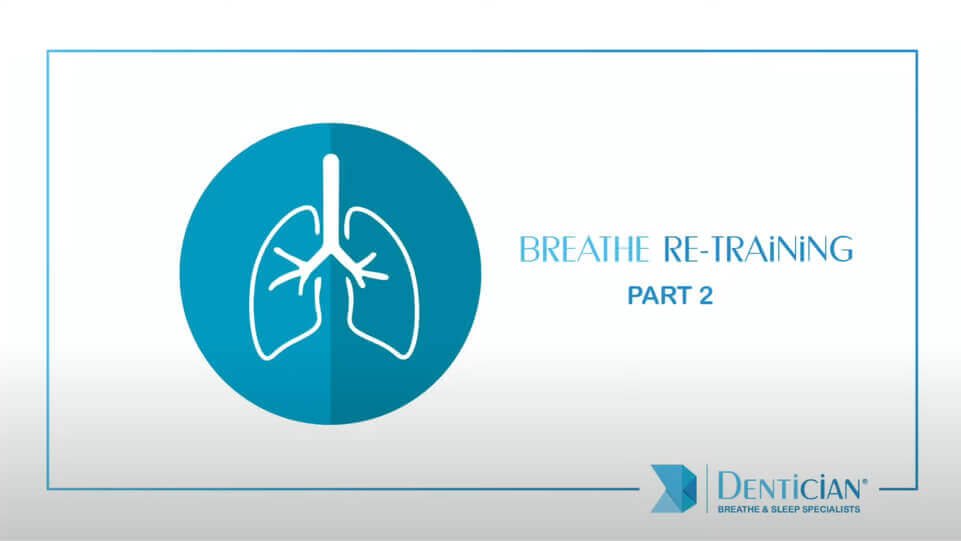Let's Re-evaluate Our Breathing! Written By: Dr. Ankita Shah, Jan 2021
When was the last time you thought about breathing?
As a child I was told that breathing is an action that happens automatically and not much attention needs to be paid on it. The same theory is passed onto our children, I lived my life this way without ever questioning the theory. Now I know better: Question everything!
Do we ever notice: "Are we breathing through our nose or mouth? Do you find any difficulty breathing through your nose? Do you find yourself gasping for air?"
Breathing indeed is a 24*7 unconscious act. But BREATHING is that missing link that connects your mind and body. It provides necessary oxygen to your body, without which the cells of your body would quickly die.
BUT ARE YOU BREATHING THE “RIGHT WAY”?!
Share in comments below, if you’ve ever thought taking a “Big breath” will increase the amount of oxygen in your blood!
THE MYTH TO BE BUSTED:
"It is a common misconception that breathing in a larger volume of air increases the oxygenation of the blood. It would be like pouring more water into a glass that is already filled to the brim." The thing is, nearly everyone has plenty of oxygen in their blood at all times i.e. ~ 95 – 99% saturated. Taking bigger breaths will do little to increase the oxygen content in the blood
So, why do we experience breathlessness throughout the day? Why do we gasp for air with huge mouth breaths? In reality, what we’re responding to, may actually be our body’s decreased tolerance to carbon dioxide, rather than a need for more oxygen. Increasing oxygen in our body is not the answer, but improving the delivery of oxygen is!
NASAL BREATHING V/S MOUTH BREATHING
When you nasal breathe the air is filtered, warmed and humidified in the nose and it reaches the lowermost part of your lungs where a lot of blood vessels are present. This blood carries the oxygen to your brain which is the power house/ computer of your body.
BUT when you mouth breathe, air is neither filtered nor warmed and it only reaches the upper parts of the lungs. Also you end up breathing out a lot of CO2 rather than taking in more oxygen.
The lower lung is rich with the parasympathetic nerve receptors associated with calming the body and mind, whereas the upper lungs - which are stimulated by chest and mouth breathing - prompt us to hyperventilate and trigger sympathetic nerve receptors, which result in the fight or flight reaction.
WHY IS THIS OXYGEN(O2) AND CARBON DIOXIDE (CO2)SO IMPORTANT?
O2 and CO2 are team players and work the best in the presence of each other. Lower CO2 levels strengthens the bond between Haemoglobin(HB) and O2 making it difficult for O2 to reach your brain from blood.
O2 supply to the brain is not just dependent on how much oxygen we breathe in but also depends on how much CO2 we breathe out.
Now how does our body respond when we breathe out the CO2 ie when we mouth breathe :
Either our Blood pressure or Heart Rate will shoot up to facilitate the O2 out of the Hemoglobin. But is this healthy on a long run? Of course not, one can develop cardiac problems.
Our body’s also compensate by telling our brain that listen you are breathing too much and you need to slow down. In such a situation you start running out of breath.
WHAT LOW CO2 LEVELS CAN DO INSIDE OUR BODY?
It disrupts the pH of our blood which is very essential for activities of 1000+ enzymes and vitamins
Low CO2 constricts the blood vessels and makes the airway passages also narrow making nasal breathing difficult.
It also reduces our energy levels by interfering with important metabolic processes.
This is not it, but it also affects our brain by reducing the ability to focus and manifest in the form of ADHD.
It also decreases the ability of body cells to absorb sugar from the body leading to diabetes.
Not just this but it weakens the immune system making it difficult for your body antibodies to fight VIRUSES and BACTERIA.
Benefits of Nitric Oxide formed while nasal breathing:
Nitric Oxide is a chemical that is produced by the paranasal sinuses around the nasal cavity.
It helps
In opening up the airway and blood vessels
Helps in facilitation of O2 to the brain
Decreases inflammations and infections like tonsillitis and adenoids
What’s most important is it helps in fighting VIRUSES and BACTERIA. That is why breathing through the nose helps in harnessing all these properties of Nitric Oxide and maintains the optimum level of CO2 in the body.
There are many ways in which we can help you and your child to retrain your breathing. Here are some links to the excercises for you to try at home.
If you feel better with these please feel free to contact us to help you reach your goals.
Yogis have been emphasizing nasal breathing since ancient times, for this very reason, high time we pay attention to our breathing!! Mouth is for eating, talking otherwise it must be kept closed! Nasal Breathing is that missing link that connects mind and body. Happy Breathing !
Please feel free to ask me any questions. Contact Us
Keywords : mouth breathing, Oral myofunctional Therapy, OMT, Nasal breathing, mouthbreathing treatment, mouthbreathing symptoms, mouthbreathing causes, sleep dentistry, breathing exercises, oxygen, carbon dioxide, nitric oxide, breath retraining




